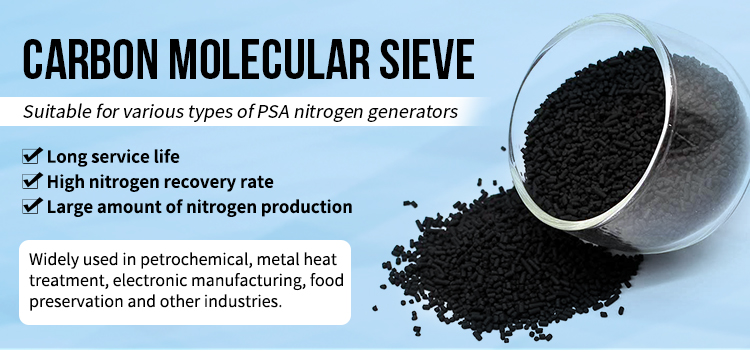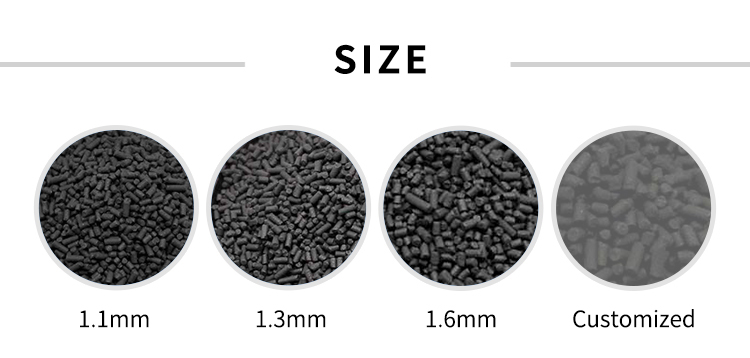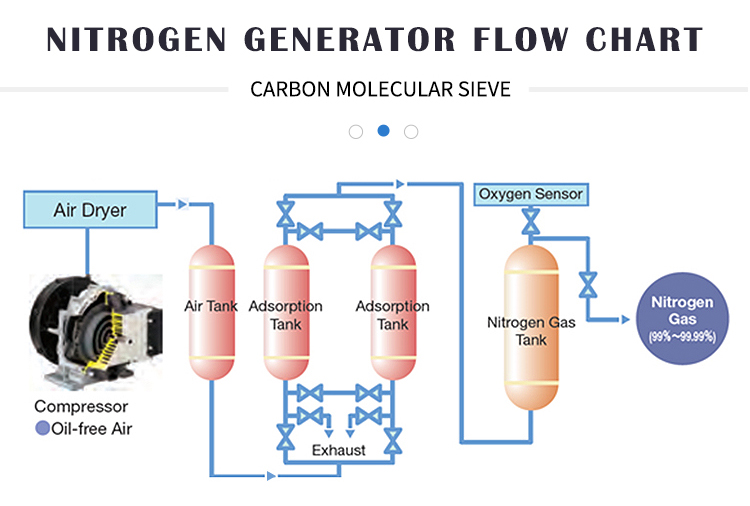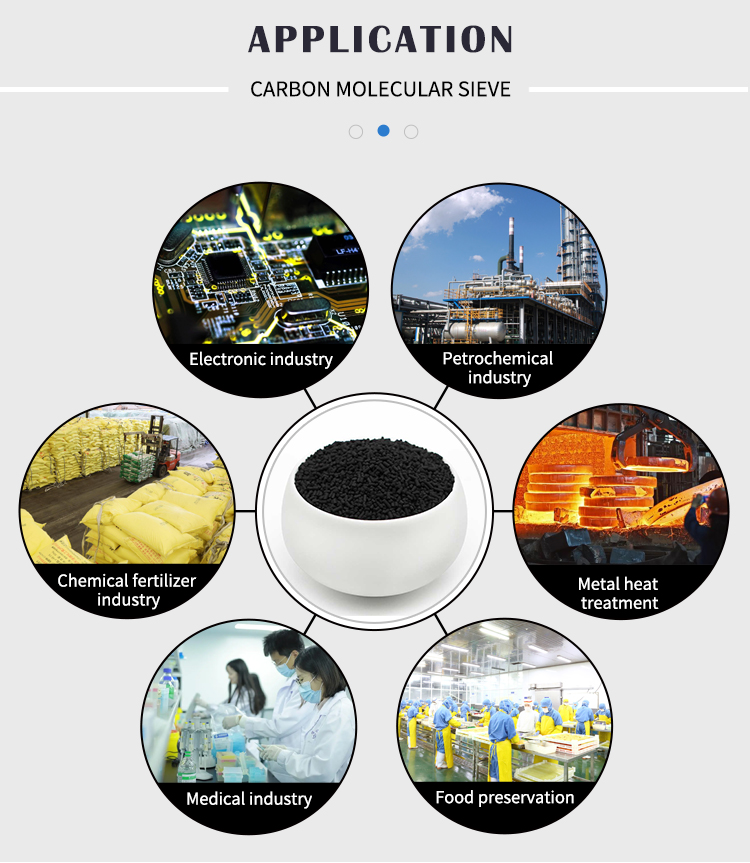Guangdong Xintao Carbon Molecular Sieve takes the appearance of cylindrical black solid, contains countless 4 angstrom fine pores. It can be used to separate air into nitrogen and oxygen.

Guangdong Xintao Carbon Molecular Sieve takes the appearance of cylindrical black solid, contains countless 4 angstrom fine pores. It can be used to separate air into nitrogen and oxygen. In industry, carbon molecular sieve can concentrate nitrogen from air with PSA systems,up to 98%~99.999% N2 purity. Our carbon molecular sieve products have the character of large nitrogen yield capacity; high nitrogen recovery. It can meet the requirement of all types of PSA nitrogen systems. The carbon molecular sieve is widely applied in petroleum chemical industry, the heat treatment of metal, the electronic manufacture and food preservation industries.

Technical Parameter:
| Model | Carbon Molecular Sieve | |||
| Appearance | Black, extruded(pellet) | |||
| Nominal pore diameter | 4 angstroms | |||
| Bulk Density | 640-660g/ml | |||
| Dust level | 100PPM Max | |||
| Diameter (mm) | 1.0-1.2 | 1.3-1.5 | 1.5-1.8 | 1.8-2.0 |
| Crushing Strength (N/pc) | 50-60 | 60-70 | 70-80 | 80-100 |
| Production Output | Data as follows | 3-8% loss | 5-15% loss | 10-20% loss |
| Type | Adsorbent pressure(MPa) | N2 purity (%) | N2 quantity(M3/T.MT) | Air/N2(%) |
| CMS-280 | 0.75-0.8 | 99.999 | 90 | 6.4 |
| 99.99 | 135 | 4.5 | ||
| 99.9 | 190 | 3.4 | ||
| 99.5 | 280 | 2.8 | ||
| 99 | 335 | 2.2 | ||
Typical Application:
a) Be used to separate air into N2 and O2.
b) Be applied in petroleum chemical, heat treatment, electronic and food preservation industries.
Nitrogen Usage Areas:
1-) In ammonia synthesis
2-) In providing inert atmosphere in chemistry, textile, food, paint industry
3-) In the transfer of extremely flammable liquids under nitrogen pressure
4-) In the electronics industry, in the manufacture of light bulbs
5-) In the food industry, freezing of food and long-term storage and transportation.
6-) In nuclear reactors
7-) In the prevention of oxidation of edible oils
8-) Cleaning of tankers, pipelines and refineries
9-) In grain silos
10-) In providing controlled atmosphere in heat treatment furnaces
11-) In glass and steel production
12-) In the safety of coal mines and fire extinguishing
13-) Fermentation
14-) Packaging of food and sensitive objects
15-) In the propulsion of oil and gas wells
16-) Tissue freezing and storage
17-) Interlocking of metals
18-) As a coolant in molding, film extrusion and process equipment
19-) Recovery of process solvents
20-) As a chemical reagent and a reagent carrier
21-) Fire prevention in the warehouses of paper and paper products factories.
22-) Fire prevention in chemical warehouses.
23-) In military ammunition and fuel tanks.
24-) In pharmaceutical production factories.

